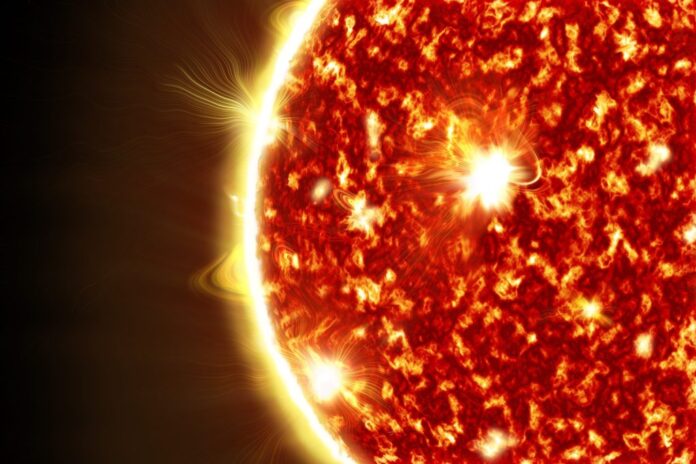In a dramatic display of solar activity, the Sun has emitted a formidable X6.3 solar flare, marking the second X-class eruption recorded within a single day, according to reports from the Coordinated Universal Time (UTC). This event also signifies the third such eruption within the span of just 24 hours.
This latest solar flare not only stands as the strongest observed during Solar Cycle 25 but also ranks as the 26th most potent since the year 1996, underlining the intensity and significance of this celestial phenomenon.
Scientists and astronomers closely monitoring solar activity have been astounded by the frequency and strength of these recent solar eruptions, highlighting the dynamic nature of our Sun and its potential impacts on Earth’s technological infrastructure and space weather.
As researchers continue to analyze the data and track the progression of solar activity, the latest X-class solar flare serves as a stark reminder of the Sun’s ever-present influence on our planet and beyond.
Solar Flare
A solar flare is a sudden and intense eruption of electromagnetic radiation from the Sun’s surface. It occurs when magnetic energy stored in the Sun’s atmosphere is suddenly released. Solar flares can emit various forms of energy across the electromagnetic spectrum, including X-rays, ultraviolet radiation, visible light, and radio waves. These eruptions can cause disturbances in Earth’s atmosphere and magnetic field, leading to phenomena such as geomagnetic storms and auroras. Additionally, solar flares can impact satellite communications, navigation systems, and power grids on Earth.
Key Points
- The Sun emitted a powerful X6.3 solar flare.
- It is the second X-class flare observed within a single day (UTC) and the third within 24 hours.
- This flare is the strongest recorded during Solar Cycle 25.
- It ranks as the 26th strongest solar flare since 1996.
- The frequency and intensity of recent solar eruptions underscore the dynamic nature of the Sun.
- Scientists are closely monitoring these events due to their potential impacts on Earth’s technological infrastructure and space weather.



